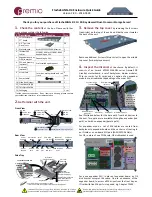Reviews:
No comments
Related manuals for E67S

FlacheSAN1L-D4
Brand: Premio Pages: 3

Crestron 908012
Brand: SIERRA VIDEO SYSTEMS Pages: 32

InterServe 600 Series
Brand: Intergraph Pages: 104

SYSGuard 3001
Brand: EXAGATE Pages: 8

cm4008
Brand: Opengear Pages: 4

PRIMERGY BX620 S5
Brand: Fujitsu Pages: 50

PRIMERGY BX620 S4
Brand: Fujitsu Pages: 81

PRIMERGY BX900 S1
Brand: Fujitsu Pages: 46

PRIMERGY BX620 S6
Brand: Fujitsu Pages: 56

Primergy BX920 S4
Brand: Fujitsu Pages: 66

PRIMERGY BX920 S2
Brand: Fujitsu Pages: 70

PRIMERGY BX920 S2
Brand: Fujitsu Pages: 102

PRIMERGY BX400 S1
Brand: Fujitsu Pages: 60

PRIMERGY BX900 S1
Brand: Fujitsu Pages: 144

Primergy BX900 S2
Brand: Fujitsu Pages: 108

PRIMERGY BX600 PG-LNB101
Brand: Fujitsu Pages: 28

PRIMERGY BX600 S3
Brand: Fujitsu Pages: 103

PRIMERGY BX620 S5
Brand: Fujitsu Pages: 96

















